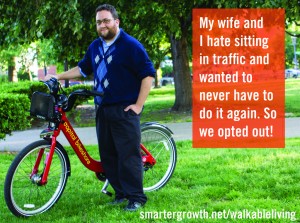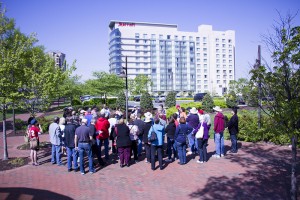The Montgomery County Councilmember who is credited with first proposing a Bus Rapid Transit network for the county is optimistic parts of a BRT system will start being built in the next four years.
Councilmember March Elrich (D-At large) also said he thinks ridership projections in the Master Plan for BRT before the Planning Board might actually be too low. Many opponents of a plan to include Rockville Pike/Wisconsin Avenue as a BRT corridor have claimed the ridership numbers in a study by Planning Department staff are inflated.
Elrich talked about where BRT stands on a County Cable Montgomery interview show earlier this month.
“You really can’t predict what ridership will be in the future if you replace the non-choice system with a system might choose to use,” Elrich said, comparing existing Ride On bus service to a potential BRT network. “They might make different choices if a bus ran every six minutes in rush hour and didn’t stop for lights because they had a greenway to go through.”
The “rapid” component of BRT is that the buses in the system would move faster than typical buses because the buses would have exclusive lanes.
That has caused a stir with communities and residents in Bethesda and Chevy Chase, where some don’t want to lose a lane of regular traffic to a bus-only lane. The Master Plan for BRT projects between 44,000 and 49,000 daily riders for a southbound MD 355 system and between 22,000 and 34,000 daily riders for a northbound MD 355 system by 2040.
It is projected to be the busiest of the 10 proposed corridors.
The Planning Board is working through its Master Plan on the system with the hopes of transmitting it to the County Council on July 22. The fourth and final planned worksession is July 11.
Meanwhile, the Coalition for Smarter Growth, a D.C.-based advocacy group is pushing for signatures on a pro-BRT petition. The Coalition’s executive director testified in favor of the BRT Master Plan at the Planning Board’s public hearing on it.
























 Tuesday, January 22, 2013
Tuesday, January 22, 2013